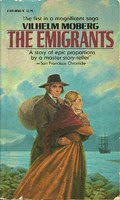I love these books, mostly because they remind me of my childhood in the 1970s when they were immensely popular and my mom, aunt, and I read them constantly. We called them gothic novels, with Daphne du Maurier's Rebecca being the proto-type, not knowing anything about the deeper, more literary, roots of the genre by the same name.
Ride a White Dolphin is more accurately categorized as a romantic suspense, where readers can expect a central love story, a happy ending, and some, if not all, of the following:
- An old house with a long history and secret passageways;
- A narrator who is ordinary and insignificant (a la Jane Eyre);
- A secretive husband whose trust is called into question;
- An alternative male who provides support and friendship;
- A sophisticated female who is in competition for the husband and has superior beauty and status.
Anne Maybury considered her novels atmospheric and that characteristic alone is precisely what makes her books, a quick diversion, still readable today. Dolphin is set in Venice. The author has an artistic appreciation for the visual world and the talent to weave a feeling of place into her text.
Dolphin is also interesting from a historical perspective. In the 1970s, as women's liberation took root, these books were being produced en mass for female readers. Leonie says the following:
"I had known for a long time before I left college the kind of work I wanted to do. The huge chemical and scientific industries drew me like a magnet."
Yes, Leonie works but she quits her job when her husband's position takes them from London to Venice. She is upset that she was not consulted prior to his having agreed to their relocation. She be-moans the fact that her job history is being damaged by her frequent starts and stops of positions, a common problem for women and complaints about which were coming to the forefront when the book was published.
Yes, Leonie works but she quits her job when her husband's position takes them from London to Venice. She is upset that she was not consulted prior to his having agreed to their relocation. She be-moans the fact that her job history is being damaged by her frequent starts and stops of positions, a common problem for women and complaints about which were coming to the forefront when the book was published.
During the rest of the novel, though, Leonie has zero interest in anything remotely scientific. She buys fashion magazines, takes painting lessons, and tries to hold on to her man. Everyone treats her like a child and she resents it.
Leonie is described as being much younger than her husband but at age 25 with her mate nearing 30, the gap is not that great. Rorke is clearly more mature, often dismissive, and frequently condescending. Leonie is small and not taken seriously. I wonder if the narrator's personality changes as Anne Maybury writes during the mid-to-late 1970s? Something to consider and find out.
And I'll bet, as the reading public began to reject female weakness, the genre faded away, not because the books were overlooked but because the convention no longer worked.
The majority of these "gothic novels" are no longer in print and are available only through second-hand book shops but there's quite a following and appreciation for the genre. To find on Amazon: Ride a White Dolphin




2 comments:
Not a genre I've got into, but I'll look out for them in second hand bookshops from now on. I'm drawn to anything set in Venice!
Thanks for passing by my blog ... : D
I hope you will continue to follow me I'll be happy to reciprocate a kiss
Miriam Stella
fashion blogger italiana
fashion blog
blog fashion
Post a Comment